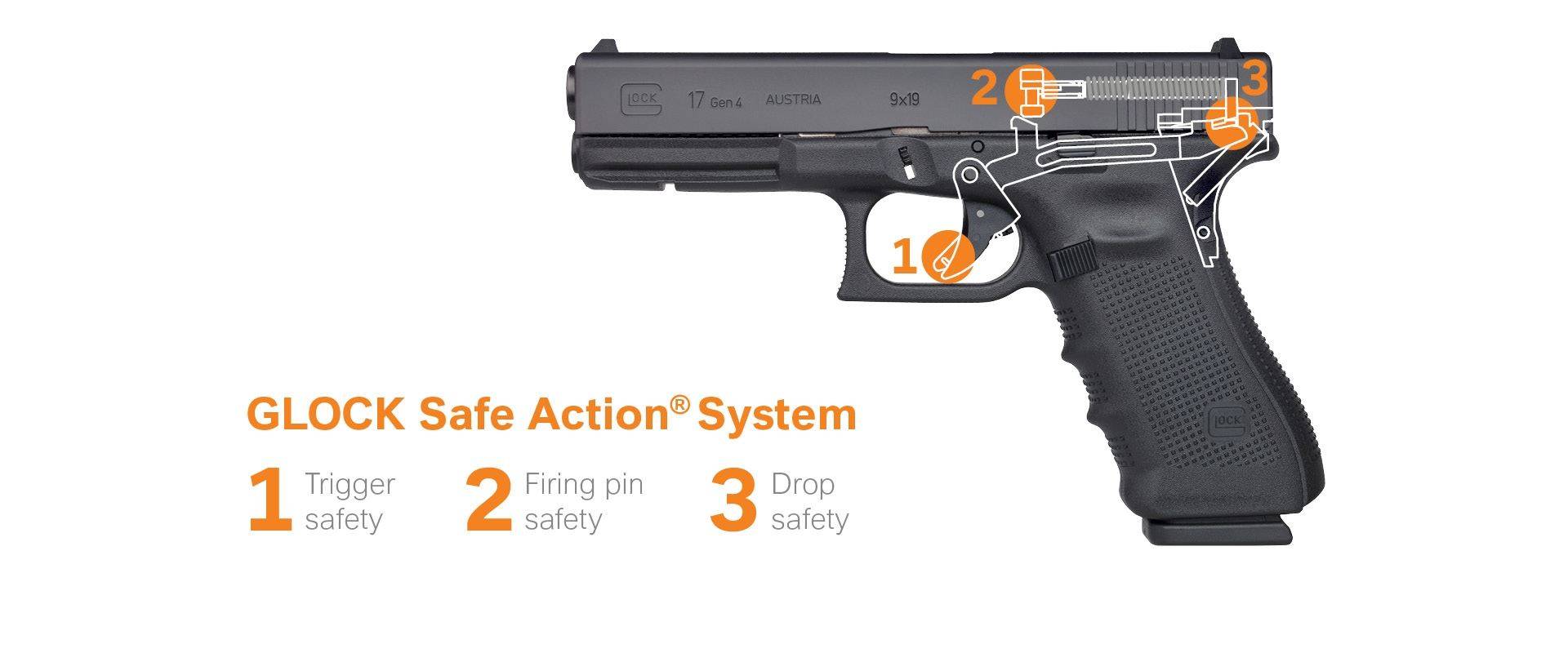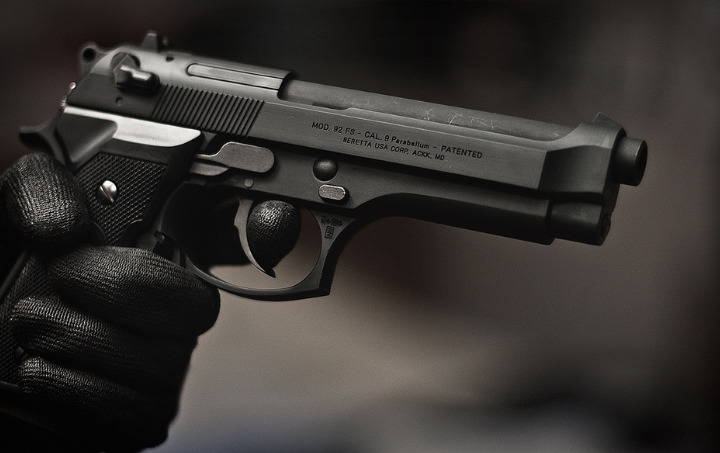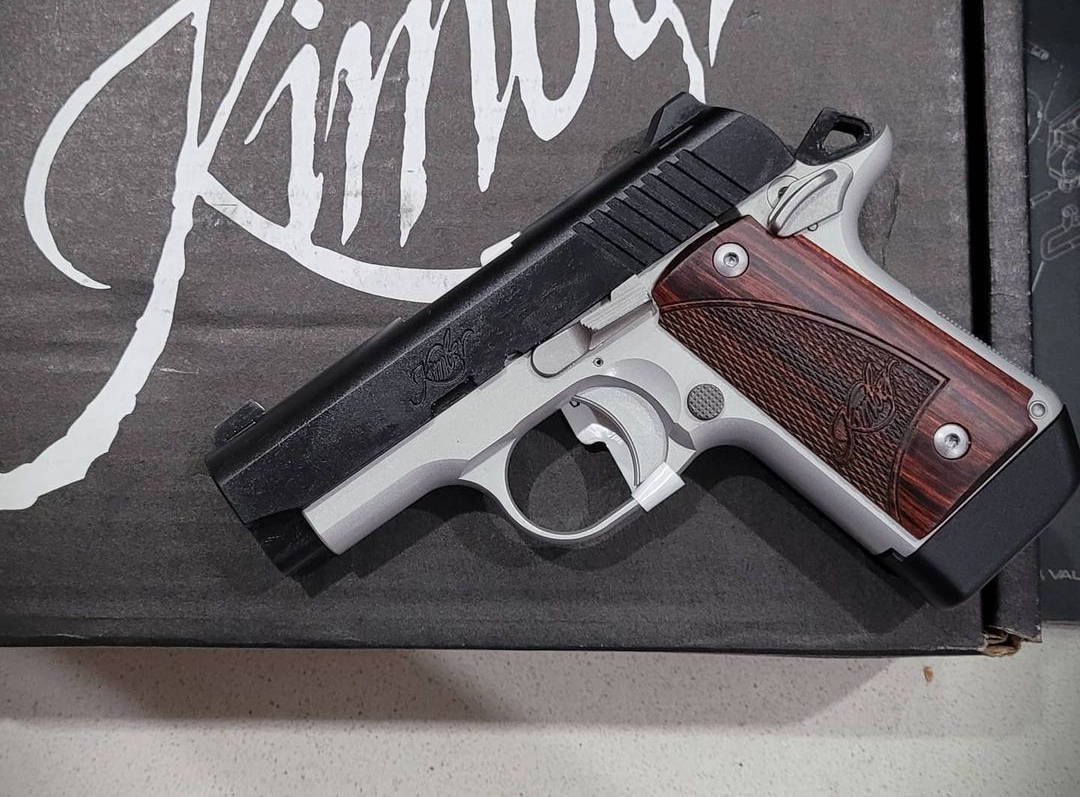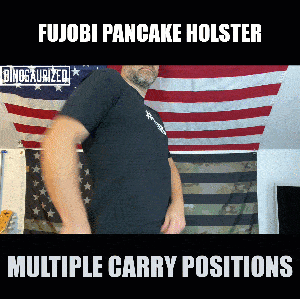Firearms are built with a certain level of reliability and safety, which includes the important feature called "drop-safety" - one of the most critical components of firearms. This design ensures that even if a loaded firearm is dropped by accident or mishandled, it will not discharge - offering greater protection to users. Despite this assurance however there are still limits on how much the weapon can be subjected to sudden impact without risk of unintended firing.

Generally speaking, drop safety is a type of mechanism which ensures your firearm stays safe if it's dropped or experiences an unwanted impact. This advanced mechanical blockage prevents the firing pin from igniting a primer, guaranteeing you protection when handling firearms.
Iver Johnson revolutionized firearms safety in the late nineteenth century with their introduction of a transfer bar system. This tool was incorporated into both revolvers and double-action only pistols, which were based on Smith & Wesson's Model 3 design. When activated by the trigger returning to rest after firing, this advanced technology prevented accidental discharge from subsequent hammer strikes against cartridges already fired!
The hammer block safety, a gun feature now common to revolvers of all kinds, was actually pioneered by Colt with its Police Positive revolver before the start of WWI! However, today's replicas are lagging behind - many do not come equipped with this device. Even remarkably, Colt does not include it in their current Single Action Army pistols; which is quite an oversight given its incredible history as one of the first firearms to use a firing pin block for improved safety.
A loaded gun, hurtling towards the ground with its muzzle pointed down, has dreadful impacts with the earth's surface. The power it brings along may be momentarily stopped, but what if some internal parts have enough mass to overpower their restraints and continue on an unexpected journey. Take for example a firing pin or striker that could potentially overpower springs trying in vain to hold them back.
On the other hand, how’s the situation when the muzzle pointed up to the sky? When the gun strikes the ground, its back strap and rear slide stop it from fully firing — but that's not all. With enough force, momentum could cause a powerful action on other parts of the firearm such as its trigger. This could result in firing pin/striker block disengagement - leading to unintentional fire from momentum alone!
What terrible scenarios, right?
Striker and firing pin blocks are housed in the slide, appearing as a plunger that needs to be pressed down during rearward trigger motion before the gun can fire. When pressed during trigger pull, these plunger-type mechanisms stop an unmodified gun from being able to fire even when dropped muzzle down. However, it is not infallible- if trigger safeties don't exist or aren’t activated properly then there could still potentially be danger of accidental discharge!
But first, let’s look up sometrigger discipline that should not be neglected during firearm training, or fight even.
Beyond their primary purpose of keeping objects other than fingers away from triggers, they can play additional roles in enhancing safety and security. Such a mission thanks to the arrival of low mass blocks, designed along with the trigger safeties, preventing any unintended movement of the trigger when dropped. It's easy to take them for granted - but that small addition is bound to make all the difference in firearm safety!
With its small size, the GLOCK trigger tab packs a mighty wallop - an almost invisible force that prevents your finger from engaging in any rearward travel. Its pivot point creates just enough friction to ensure maximum safety despite being minuscule compared to other components of the gun's trigger system.
For one of the most reliable and innovative safety mechanisms, revolvers utilize the transfer bar. Instead of having direct contact between hammer and cartridge, it features a firing pin on its other end which is designed to move out of place when not in use - preventing misfires if accidentally dropped or jolted. With just a pull of the trigger however this barrier becomes ready for action with dramatic effect, as the powerful force from an activated hammer strikes directly onto the transfer bar's connected firing pin!
As we conclude our exploration of safety mechanisms for firearms, let's take a look at the oldest: the safety notch. Its distinguishing feature is that it must be engaged manually by the user - making its operations reliant on their knowledge and experience with weapons. This type of mechanism can typically be found in older revolver guns, lever action rifles, or semi-automatic pistols to provide an additional layer of security against accidental discharge due to dropping them. When turned on, this device prevents hammer movement beyond half-cocked which importantly keeps any firing pin from being struck and subsequently discharging ammunition!
Apart from that, there are still various other safeties, which are installed to ensure drop safe for modern guns. Such is the delicate balance of parts and spring weight. When making modifications, be sure that this critical combination remains optimal – after all, keeping your handgun properly secured should always be a priority.
With an LCI, shooters can ensure their weapons are unloaded before handling them - without needing a round to be fired. This quick-and-easy feature is built into the side or rear of the slide such as on Glock 43s and other firearms, where it's easy to spot due to its raised metal bar pointing out from behind the ejection port when there's a round in the chamber.
A half-cocked hammer presents a unique safety situation for gun owners. With the face of the firing pin removed from its heading, this mechanism locks up your trigger and prevents it being pulled. The only way to unlock is by fully cocking and releasing either through an external decocker or pulling on the trigger - but we strongly advise against carrying any weapon while in that state!

For more than 25 years, the Beretta 92 FS has been a go-to pistol for military personnel, police officers and tactical shooters. This dynamic handgun provides maximum shooting comfort thanks to its fully ambidextrous safety de-cocking lever -- perfect for both right-and-left-handed users! With adjustable rear sights, manual safety controls and two 8-shot rotary mags included in each package, this incredible firearm comes housed with a foam lined plastic gun case for enhanced protection.
Are you having fun reading with Dinosaurized? Here's a little gift for better shopping experience~
Enter this 15% Discount code: "GundiscussionD15" at Checkout now~


Styled like a miniature 1911, Kimber’s Micro 9 is available in several models. All feature stainless-steel barrels machined to the tightest allowable tolerances. These aluminum-framed pistols have mild recoil for their size and are perfect for concealed carry.

Are you having fun reading with Dinosaurized? Here's a little gift for better shopping experience~
Enter this 15% Discount code: "GundiscussionD15" at Checkout now~

Ready to hit the range? This classic 1911-style micro-compact pistol is sure to put a smile on any gun enthusiast's face. With an all metal frame, and manual thumb safety, magazine release, and slide stop where you'd expect them - this sleek firearm provides exceptional control in your hand whether it be concealed or comfortably holstered up for action!

Gun safety is essential, but it's important to remember that safeties are just mechanical devices. They can be subject to failure over time and should not be relied on exclusively for protection against unintentional discharge of a firearm. They enhance safe gun handling practice – never assume the gun won't fire with your only line of defense being “the safety is on”!
Take for example: Sig Sauer's P320 pistols were thought to be immune from accidental discharges, until an innovative revelation uncovered that when dropped at a certain angle the weapon could misfire. This surprising discovery has caused many experts in the industry to re-evaluate existing safety standards and develop new methods for testing firearms reliability.
Therefore, it can be fairly said that the gun user is the main factor leading to the accident caused by gun drop. Everyone says, avoid it before it happens. Indeed, it’s the gunner who needs to thoroughly understand how the safety mechanism works in order to avoid dropping the guns unintentionally. There are a number of compulsory rules that you would better follow to ensure your own safety during the firearm, listed down below:
For more details about these must-have principles, read this article
Be sure to make an informed choice when selecting a handgun with proper safeties attached. With so many options out there, it's important for gun owners to consider how the chosen firearm fits into their lifestyle and home setup in addition to who may have access or where you will store your weapon. Instead of relying on assumptions about which models offer manual safety systems, doing some in-depth research can ensure that life-or-death situations don't end with an unexpected click instead of a bang! The US Concealed Carry Association recommends making use of available resources such as comparing several handguns on interest list and renting them at firing ranges before reaching any decisions.
As firearms technology advanced in the 1600s, it became reliable enough for a revolutionary new feature: safeties. This advancement changed the way people interacted with their guns forever and continues to protect gun owners even today!
Firearms revolutionized safety with an innovative design: The half-cocked position. This enabled users to carry guns loaded and primed without fear of accidental trigger-pulling until they were ready to fire — providing a critical leap forward in gun security.
For gun owners, the consequences of dropping a firearm could be dire. In addition to endangering innocent bystanders with an accidental discharge, hunters and military personnel face other risks like alerting their enemies or scaring away game from their position. Because these scenarios can quickly turn dangerous, there is much cause for concern!
In the United States, there is no federal requirement that all handguns must be drop safety tested. However, select states such as California have their own protocols in place to ensure these firearms are certified with this feature for added security. It is noticeable that thanks to modern engineering and ingenuity of gun manufacturers today - fear not! Even if a weapon were dropped from hand height accidently it won’t discharge due its innovative design features.
While many civilian owners may not need to consider “drop safety” for their weapons, military personnel and law enforcement officers who find themselves in rapidly-dynamic scenarios require additional protection. Whether parachuting from an airplane or arresting a suspect on the ground, drop safety features are essential in providing peace of mind that agents can rely on under pressure.
Accidentally dropping a gun can be dangerous, but luckily modern firearms are designed with ‘drop safeties’ to help keep everyone safe. While it is best not to intentionally drop your firearm - even the most experienced shooters find themselves in this situation from time-to-time due their natural clumsiness or fatigue. Understanding how these safeties work and carrying guns that incorporate them will give you greater peace of mind when handling potentially loaded weapons.
Are you having fun reading with Dinosaurized? Here's a little gift for better shopping experience~
Enter this 15% Discount code: "GundiscussionD15" at Checkout now~